Overview travel diseases:
With the increased travel activity of humans also the dog becomes ever more the tourist. It goes without saying that diseases from distant countries are also brought in. Unfortunately, this fact is often ignored and not infrequently the outcome is fatal. We veterinarians strive to provide as much information as possible. The safest way to avoid travel sickness is to leave your dog at home. However, if your pet is to travel with you, good prophylaxis is urgently needed. Today, there is a lot of knowledge about motion sickness that can be used. In addition, medications and vaccines have been developed that are available and provide good, if not 100%, protection. Travel sickness primarily affects southbound travel. However, there is a strong tendency for these diseases to spread north of the Alps as well. Especially Switzerland and Southern Germany are getting a milder and milder climate and therefore more and more diseases are appearing here, which used to be found only south of the Alps!
The four most common travel illnesses are the focus of prevention:
- Babesiosis and erlichiosis (transmitted by ticks)
- Leishmaniasis and heartworm (transmitted by mosquitoes)
There are vaccinations against babesiosis and leishmaniasis.
It is important to diagnose these diseases in time. If in doubt, have a blood test against such travel diseases done with us, if there is any ambiguity after a trip or if a dog comes from southern countries and was imported.
Since all these diseases are transmitted to the dog by disease carriers, defense against these carriers is very important. There are good medications available today that can be applied to the dog either in the form of spot-ons (drops applied to the skin) or as a collar. It is very important that you use for this protection only for these parasites approved and registered drugs and no care products from the pet stores without proof of effectiveness! We will be happy to advise you in detail on this subject.
ATTENTION: BABESIOSIS (called dog malaria) also in the region around Lake Zurich!
Babesiosis (piroplasmosis) is the most feared disease in dogs in the Mediterranean region. According to local veterinarians, there are 400,000 new infections with babesiosis per year in France alone. For about ten years, babesiosis has also increasingly occurred in Switzerland.
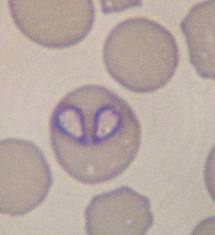
The pathogen:
Babesia are protozoa (single-celled organisms). Similar to the pathogen causing human malaria, babesia multiply in red blood cells and destroy them.
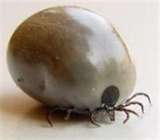
The vectors of babesiosis:
The tick species Dermacentor reticulatus (floodplain tick) and Rhipicephalus sanguineus (brown dog tick) transmit babesia to dogs when they suck blood.
Symptoms of babesiosis:
High fever sets in about one to three weeks after an infectious tick bite. Dark urine may appear. Especially in this acute phase, babesiosis often leads to the death of the animal. Once the first strong fever attacks are overcome, apathy, loss of appetite, weight loss and often jaundice follow. Inflammatory changes of the eyes and retinal detachments may also occur. In the further course, the central nervous system can be damaged. Movement disorders and epileptic seizures may then occur.
Is there a danger for humans?
Is there a danger for humans?Of the known European babesiosis pathogens in dogs, there is no danger to humans or other pets.
Prophylaxis:
For prophylaxis there are vaccinations in Switzerland. In order to protect the dogs effectively, two basic vaccinations are needed at an interval of 3-4 weeks, after which they are revaccinated every six months. It is important to know that vaccination protects against deaths, but disease cannot be prevented in every case. It is mandatory to continue the use of tick repellents. A tick repellent must have a repelling and killing effect. This should be applied throughout the year, as ticks are active around the house even in winter. We will be happy to advise you on this subject. You should only use tested medicines for protection!
Leishmaniasis: Vaccination available
If you travel with your dog to the south, there is a risk that your pet will become infected with Leishmania. Protect your dog from this serious and often fatal disease. So that the vacations do not end unhappily, the travel sickness prophylaxis must not be forgotten in any case. Today there are many and good possibilities to protect dogs reliably. Let us advise you in good time (2-3 months) before the trip.
For the most common and dangerous travel disease, leishmaniasis, there are three important points to consider, and it makes sense to consider them all together:
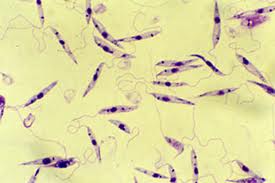
Leishmania under the microscope
Canine leishmaniasis is caused by infection with a parasite that is transmitted from animal to animal and from animal to human via the bite of infected sandflies. If your dog becomes infected with the parasites, symptoms do not have to appear immediately. However, if you notice changes such as fatigue, fever, hair loss, especially around the eyes, or weight loss after a trip to the Mediterranean region, this could indicate leishmaniasis. Unfortunately, months to years can also pass between infection (travel) and disease onset. Internal organs can also be affected, leading to changes in blood counts, joint inflammation and kidney failure. Leishmaniasis is often severe and expensive and complex treatment can only control the symptoms, a complete cure is rarely possible. For affected patients, with proper treatment, there is a chance of survival for the first 6 years after infection of 75%. In the Mediterranean region more than 2.5 million dogs are already infected with this parasite! It is important to diagnose this disease in time, so in case of doubt, it is better to have a blood test against such travel diseases done by us, if there is any ambiguity after a trip or a dog comes from southern countries and was imported from there.
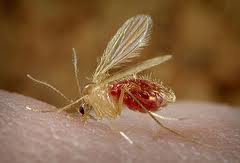
Sandfly biting
Sandflies are found in many areas of southern Europe. Especially in regions bordering the Mediterranean. These include Portugal, Greece, Spain, Italy, southern France and the Adriatic coast. Occasionally, leishmaniasis has also been detected in more northern areas such as Switzerland, southern Germany or Holland.
1. vaccination against leishmaniasis:
In Switzerland there is a vaccine against leishmaniasis. Through this vaccination an additional protection of your dog is possible. The vaccination increases the defense function of his own immune system against leishmaniasis and thus reduces the risk of an active disease with the corresponding severe symptoms. Plan well in advance before traveling south with your dog. Vaccination should be given at least two weeks before departure. After that, the vaccination can be refreshed annually.
2. avoid contact with sandflies:
The sand fly is especially active at dusk during the warm months. In southern countries, your dog should therefore stay in a closed room one hour before sunset until one hour after sunrise (during twilight and at night).
3. protection from the bite of sandflies:
Spot-on preparations (drops on the skin) and collars can be used to protect against sandflies. It is important that these are tested drugs that are approved for protection against sandflies! Care products from pet stores are strongly discouraged! Medications are only available in veterinary practices.
Also a "tick disease" from the south but unfortunately native to us in Switzerland: Ehrlichiosis
In the last years we have to do in Switzerland more and more often with the Ehrlichiose. Often the affected dogs had a stay abroad in the south, which can also be long (years) ago. The disease also occurs in humans, a direct transmission from dog to human is only possible by direct blood contact. Nevertheless, caution is advised. This disease is serious and in the chronic stage can leave permanent damage or even lead to death.
The pathogen:
Ehrlichia canis is a bacterium that affects white blood cells:
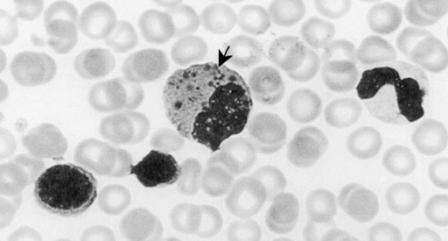
The vectors of ehrlichiosis:
The tick species Rhipicephalus sanguineus(= brown dog tick) transmits ehrlichia to the dog when sucking blood.
Symptoms of ehrlichiosis:
The signs of the disease usually come insidiously and with great delay in the form of apathy and lack of appetite. It is also possible that fever appears suddenly. As the disease progresses, nosebleeds and hemoptysis may occur. Bloody urine and a general increased bleeding tendency can then subsequently lead to the death of the patient.
Is there a danger for humans?
The disease occurs in humans and is called HME (human monocytic ehrlichiosis). However, transmission directly from dog to human is quite unlikely. Nevertheless, direct blood contact should be avoided. Wear protective gloves to care for wounds.
Treatment:
In principle, this disease is treatable with a special antibiotic. The therapy usually lasts several weeks and often has to be repeated until the pathogens have disappeared. In the case of a chronic course with severe symptoms, help may also come too late.
Prophylaxis:
The only way of prevention are tick repellents. A tick repellent should have a repelling and killing effect against the brown dog tick. This should be applied all year round, as the ticks are also active around the house in winter. We will be happy to advise you on this subject. You should only use tested drugs for defense!

